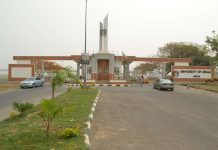Workers all over the world are celebrating the yearly International Workers’ Day, also known as Labour Day in some countries on 1 May, or the first Monday in May.
Going memory lane, The special day meant to acknowledge workers, also referred to as May Day, is a celebration of labourers and the working classes, promoted by the international labour movement.
Sources revealed that the Marxist International Socialist Congress met in Paris and established the Second International as a successor to the earlier International Workingmen’s Association., even as 1 May traditionally, is the date of the European spring festival of May Day. In 1889.
On the history of this date and its emergence and resolution for it to be set aside as a special dayte for workers, in America, the 1 May date was chosen by the American Federation of Labor to commemorate a general strike in the United States, which had begun on 1 May 1886 and culminated in the Haymarket affair four days later.
Meanwhile, they had adopted a resolution for a “great international demonstration” in support of working-class demands for the eight-hour day.
Interestingly, the demonstration subsequently became a yearly event while the 1904 Sixth Conference of the Second International, called on “all Social Democratic Party organisations and trade unions of all countries to demonstrate energetically on the First of May for the legal establishment of the eight-hour day, for the class demands of the proletariat, and for universal peace”.
Considering the acknowledgement of this date in some countries, the 1st of May, or first Monday in May, is a national public holiday but in most cases as “International Workers’ Day” or a similar name.
Some countries celebrate a Labour Day on other dates significant to them, such as the United States and Canada, which celebrate Labor Day on the first Monday of September.
The religious aspect is not left behind as the Catholic Church in 1955, dedicated 1 May to Saint Joseph, the patron saint of workers and craftsmen, among others, the Worker.
In Nigeria, the holiday is also being observed on the same date on a yearly basis; just to acknowledge the efforts of workers, do an appraisal or assessment to determine if they are being treated well and identify the areas where the government should concentrate on for them to be more productive to themselves, family and their country.
But it’s a coincidence that the country at the moment is undergoing transition of Government as the President, Muhammadu Buhari marks his last May Day in office, on the same workers’ day.
In the area of assessment labour unions have scored the regime and state governors low, saying they pauperised workers and inflicted hardship on Nigerians. The Punch reports.
They lamented the galloping inflation in the country which they said had eroded the 40 per cent pay rise recently approved by the Federal Government with effect from January.
Sources also disclosed that last week, the government paid the 40 per cent increase in allowance to various categories of federal workers but labour leaders said the pay rise had been lost to inflation.
On the scorecard, the area of welfare has not been palatable for workers in the country as the Nigeria Labour Congress and the Trade Union Congress also flayed governors for not paying adequate attention to the welfare of workers in their states.


























